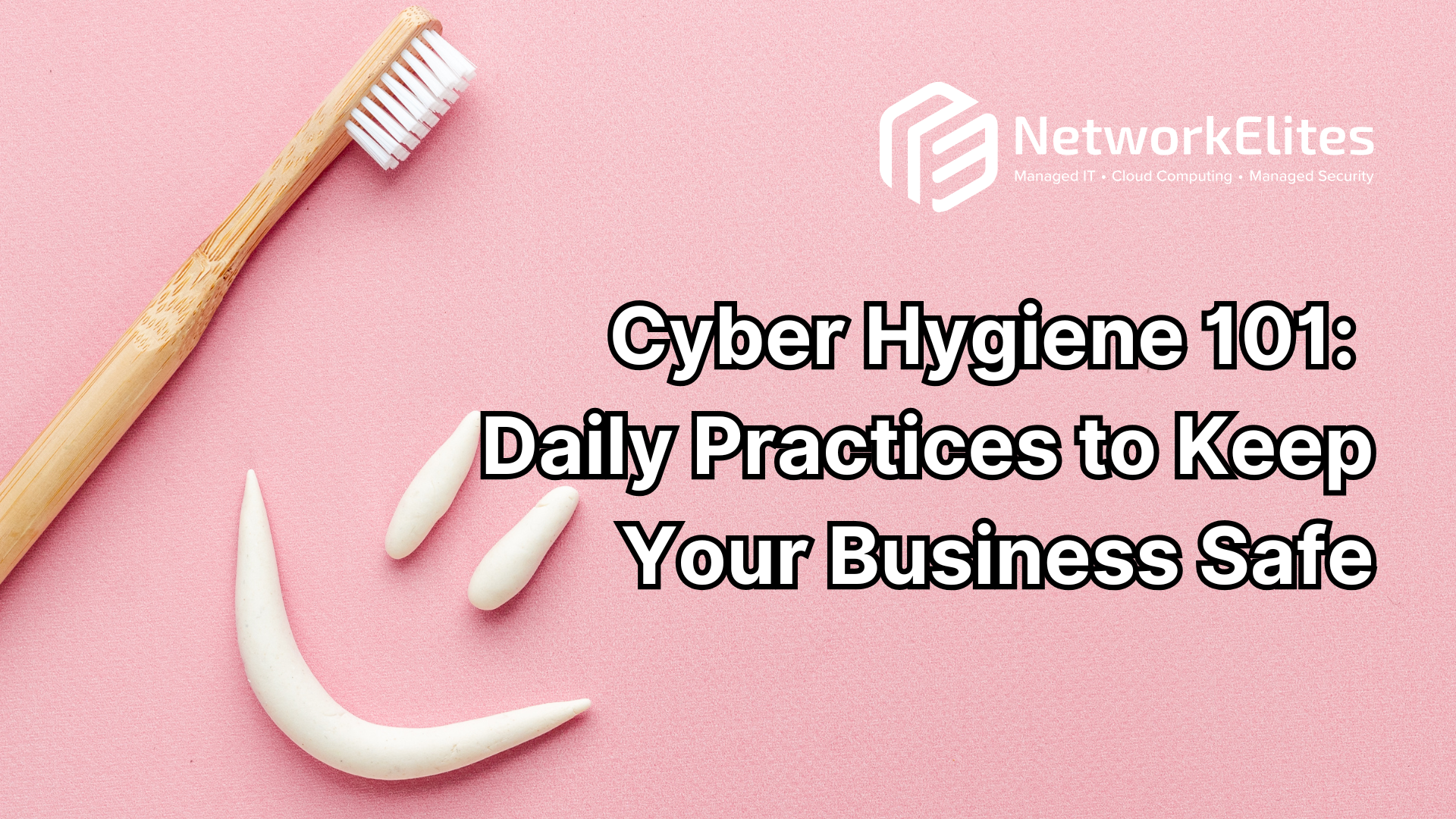Cyber Hygiene 101: Daily Practices to Keep Your Business Safe
The growing reliance on technology has brought unprecedented opportunities for businesses, but it also comes with its set of challenges—cybersecurity risks topping the list. Cyberattacks are no longer a matter of "if," but "when." From phishing scams to ransomware, the threats facing small businesses and entrepreneurs are increasing at an alarming rate. But there's good news—implementing daily cyber hygiene practices can dramatically reduce your risk and safeguard your business.
This guide will walk you through the fundamentals of cyber hygiene, the biggest threats to look out for, and practical steps you can take each day to protect your data, systems, and assets.
What Is Cyber Hygiene and Why Is It Important?
Cyber hygiene refers to the daily practices and precautions businesses and individuals take to maintain the security of their systems, data, and networks. Think of it as brushing and flossing your teeth—just like these habits prevent cavities, consistent cyber hygiene prevents data breaches, malware infections, and other security lapses.
A robust cyber hygiene routine doesn’t just protect your systems; it builds trust with your customers, safeguards your financial assets, and ensures compliance with industry standards. Keeping your business digitally clean isn’t just essential—it’s non-negotiable in today’s threat landscape.
Common Cyber Threats Every Business Faces
Understanding what you’re up against will help you build effective defenses. Here are the most common types of cyber threats facing businesses today:
•Phishing Attacks: Deceptive emails or messages designed to trick users into sharing sensitive information like login credentials or credit card numbers.
•Ransomware: Malware that encrypts your files, holding them hostage until a ransom is paid.
•Insider Threats: Disgruntled employees or unintentional actions from staff that compromise security.
•Weak Password Attacks: Exploiting easy-to-guess or reused passwords to gain unauthorized access.
•Software Vulnerabilities: Outdated software or unpatched systems that attackers exploit to gain entry.
Now, how do you defend against these threats? With consistent cyber hygiene practices.
Essential Daily Cyber Hygiene Practices
A comprehensive cyber hygiene routine is your first line of defense. Here are the steps you and your team should be taking daily to keep your business safe.
1. Monitor and Update Security Measures
Ensure that your antivirus software, firewalls, and intrusion detection systems are running and up to date. Automated scans for malware or unauthorized software should also be conducted regularly.
2. Use Secure Internet Connections
Ensure that your business network is encrypted, and caution employees against using public Wi-Fi networks for sensitive business tasks. Encourage the use of secure virtual private networks (VPNs) for all online activities.
3. Enable Multi-Factor Authentication (MFA)
Enable MFA wherever possible. This requires users to verify their identity through multiple steps—such as a password and a text message code—making unauthorized access significantly more difficult.
4. Be Wary of Suspicious Emails
Train employees and yourself to scrutinize all incoming emails. Look for red flags like misspelled domains, unexpected attachments, or urgent language asking for sensitive information.
5. Log Out of Systems After Use
Leaving accounts logged in, especially on shared devices, invites potential breaches. Make it a rule for employees to sign out after finishing their tasks.
Staying consistent with these daily practices fosters a proactive rather than reactive approach to cybersecurity.
The Critical Role of Employee Training
Your employees are your first defense—and sometimes your biggest vulnerability. A compromised account or an accidental click can have serious consequences. To ensure everyone is prepared, consider these strategies for employee training:
•Conduct Regular Training Sessions: Keep your team updated on the latest cyber threats and teach them how to identify and report suspicious activities.
•Run Simulated Phishing Drills: Test your team’s readiness by sending fake phishing emails to see how they respond. Use these drills as teaching opportunities.
•Create Clear Guidelines: Develop simple, actionable protocols for handling sensitive information and reporting potential security breaches.
When employees know what signs to look for and the right steps to take, they become an integral part of maintaining the cyber hygiene of your business.
Keep Software and Systems Updated
Cybercriminals frequently exploit outdated software and unpatched vulnerabilities to gain access to business networks. Here's how to stay ahead of the game when it comes to systems maintenance.
1.Enable Automatic Updates: Many software providers offer automatic updates that fix bugs and patch vulnerabilities. Enable these to ensure your systems are consistently up to date.
2.Maintain a Patch Management Schedule: For software that doesn’t auto-update, set a regular schedule for performing manual updates.
3.Audit Software Use: Remove redundant or obsolete applications to reduce your attack surface.
Proactive patch management ensures your business doesn’t fall victim to attacks that exploit known vulnerabilities.
Secure Password Practices
Passwords are a major entry point for cybercriminals, which makes strong password hygiene absolutely essential. Here's how to enhance your protection in this area.
•Encourage employees to create strong, unique passwords for each account. A good rule of thumb is to construct passwords with at least 12 characters, including a mix of letters, numbers, and symbols.
•Invest in a password manager to help employees securely store and manage their credentials.
•Implement regular password changes, especially after suspected breaches or system updates.
A robust password policy is one of the simplest yet most effective ways to fortify your cybersecurity defenses.
Back-Up and Recovery Planning
Back-ups are your safety net. If the worst happens and your data is compromised, having regular, secure back-ups ensures you can restore your systems with minimal downtime.
•Schedule Daily Back-Ups: Use automated systems to back up critical business data every day.
•Store Back-Ups Securely: Ensure that your back-ups are stored in a secure, preferably off-site location. Cloud-based back-up solutions are a great option.
•Test Your Recovery Plan: Don’t wait for an emergency to assess whether your recovery plan works. Conduct regular drills to ensure data can be restored quickly and efficiently.
When combined with daily hygiene practices, a solid back-up and recovery plan provides invaluable peace of mind.
Safeguard Your Business with Cyber Hygiene
Good cyber hygiene isn’t just an IT issue—it’s a business priority. By adopting daily practices, training employees, and staying vigilant, you can protect your business from costly and damaging cyberattacks.
If cybersecurity seems overwhelming, remember that you don’t have to go it alone. Seeking assistance from professionals who specialize in cybersecurity can streamline and strengthen your efforts, ensuring your business stays resilient in the face of evolving threats.
Take the first step toward securing your business today. Prioritize your cyber hygiene—because in the digital age, your business's health depends on it.








